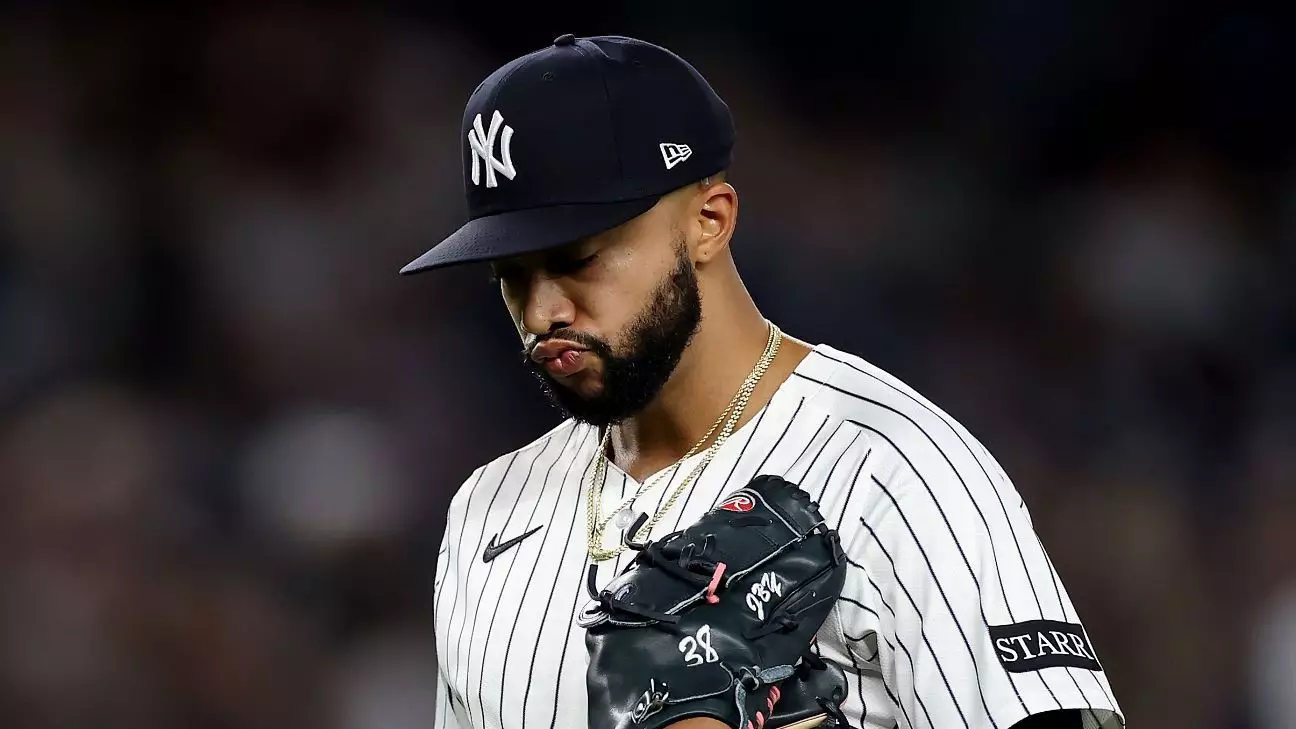The New York Yankees have found themselves grappling with an unexpected dilemma in the early part of the season: the performance of their new closer, Devin Williams. Despite being heralded as one of the top relief pitchers in baseball, Williams has stumbled out of the gate, leaving fans and management alike pondering the viability of his role. His most recent outing against the Toronto Blue Jays serves as a glaring illustration of his struggles, culminating in a disappointing loss that was punctuated by the unmistakable discontent of the Yankee Stadium crowd.
Williams’ journey has been anything but ordinary. Acquired from the Milwaukee Brewers in the offseason, he was expected to be a stabilizing force in the Yankees’ bullpen, replacing Clay Holmes as the primary closer. However, as evidence by a disheartening 11.25 ERA in his first ten appearances, expectations seem to be colliding with the harsh realities of performance, prompting manager Aaron Boone to entertain the discussion of a potential lineup shift. “We’ll see,” Boone stated, revealing the uncertainty surrounding Williams’ future. This ambiguity is both a sign of concern and an acknowledgment of the urgency to rectify the situation quickly.
Fan Sentiment: The Crucible of Pressure
The scene at Yankee Stadium was electric, yet fraught with tension as Williams took the mound. The moment he allowed a leadoff single to George Springer, restless fans began chanting for Luke Weaver, their desire for change evident. This reaction is emblematic of the pressure cooker environment that comes with donning the pinstripes—an environment where performance is scrutinized under a magnifying glass. While the fans’ swift call for Weaver may seem harsh, it encapsulates a yearning for competitive excellence—a hallmark of the storied Yankees franchise.
Despite the burgeoning frustrations in the stands, Williams displayed resilience by acknowledging the need to work through his challenging phase. His admission that “nothing’s working right now” signals a rare moment of vulnerability for an athlete usually shrouded in confidence. This emotional introspection might be exactly what is needed to reclaim his form, but the clock is ticking. Each game presents an opportunity, and as the calls for Weaver grow louder, so too do the stakes for Williams to respond positively.
Statistical Dive: The Decline of a Star
Delving deeper into Williams’ performance reveals a stark contrast to his illustrious past. Historically, Williams has been celebrated for his ability to confound hitters with a screwball-like changeup known as The Airbender. An impressive 1.83 ERA during his six seasons with the Brewers showcased his prowess. Yet, the tides have turned dramatically this season. Considering he has faced 44 batters and allowed an alarming 10 earned runs over just eight innings, the metrics are troubling.
His whiff rate has plummeted from 40% to a meager 24.1%, raising questions about his ability to secure outs. Batters, who previously managed a .133 average and .488 OPS against him, are now running rampant with a .343 average and .912 OPS. These figures paint a clear picture: Williams is no longer the dominant force he once was, and this raises the critical question of whether he is fit for the closer role at this juncture in the season.
A Managerial Tough Love: Boone’s Leadership Challenge
Manager Aaron Boone is faced with a visceral leadership test—how to manage a star player who is drowning in confidence and performance. The constant tension of wanting to prioritize team success while fostering a player’s growth presents a unique challenge. Boone’s careful balance of accountability and support could be the defining factor for the Yankees as they navigate what could be a pivotal time in the season.
Transitioning Williams out of the closer role may initially seem like a punitive measure, but it could also serve as an essential reset for a struggling player. Boone must weigh short-term performance against long-term potential, and the ramifications of a decision to pull Williams from the ninth inning could resonate throughout the team. The decision will not only impact the player’s psyche but could also shake the delicate morale of a bullpen that thrives on confidence and collective success.
A Player’s Resolve: Williams’ Perspective
Ultimately, the onus lies on Williams to reclaim his position and performance. His acknowledgment of adversity shines a light on the intrinsic struggles faced by athletes at all levels. Despite the boos and the mounting statistical evidence of his decline, Williams expressed an unwavering belief in himself. Such determination, while encouraging, must manifest into tangible performance on the field. If he can harness this resilience and address his commanding issues, he may yet silence the critics and rally back into the form that once made him a force to be reckoned with in the MLB.
In a landscape where expectations run high, the Yankees’ path forward will necessitate introspection, strategy, and perhaps, the kind of tough love that is essential for any athlete seeking redemption. The question remains—can Devin Williams rise to the occasion and reclaim his mantle as a prevailing closer for the storied franchise? The answer may well define not just his career but the Yankees’ chances in the torrid race of the MLB season.

